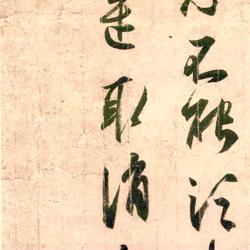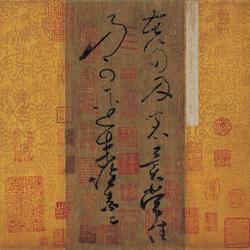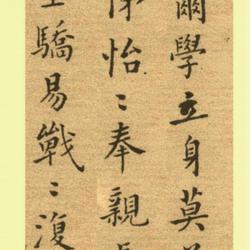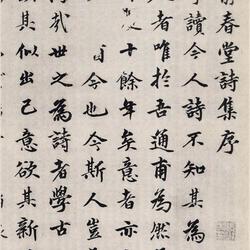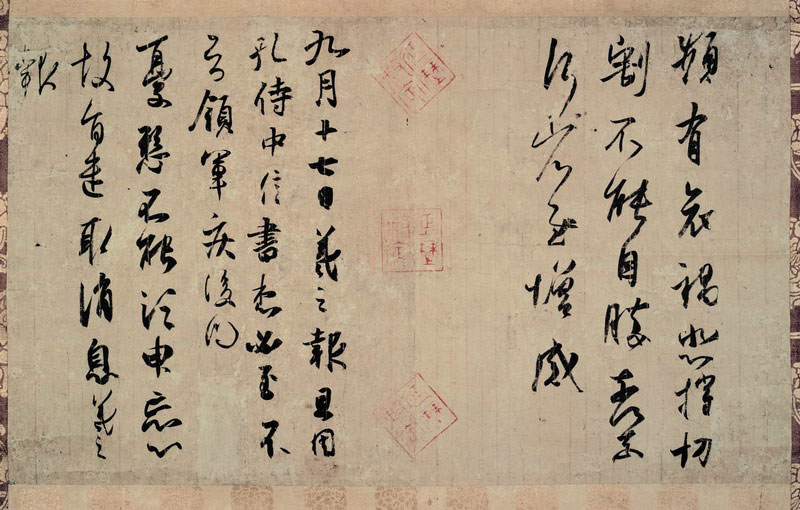
"Confucius Shizhong Tie" is a copy made by the Imperial Household Office in the Tang Dynasty. It is now converted from a scroll into a scroll. Ikutori Maeda Kaizo, Tokyo, Japan. There are nine lines in total, the first three lines are "Sad Misfortune Tie", and the last six lines are "Confucius Shizhong Tie". This post was also brought to Japan by an envoy sent to Tang Dynasty during the Nara period and donated to Todaiji Temple. Emperor Kanmu (737-806) left the mark of "Enryaku Decree" in Zhuwen.
Copy of "Frequent Misfortunes", paper version. 26.9 cm in length. 3 lines, 20 words. Running script. The characters are tilted, pitched and hooked, the strokes are light and quick, round and drawn, and the structures are mostly horizontal.
Interpretation: There are frequent sorrows and misfortunes, which are devastated and cut apart. I can't overcome myself. There is nothing I can do! It comforts and increases my feelings.
Copy of Wang Xizhi's "Confucius Shizhong Tie", paper version. 26.9 cm in length. 6 lines, 42 words. Running script.
Explanation: Xi Zhi Bao on September 17: And because Kong Shizhong sent a letter, I think he will be here. I don't know if the leader of the army is ill and then asks. You can't forget your worries for a moment, so I sent you to get the news. Xi's reward.
"Fashu Yaolu" is recorded in the fourteenth volume of "The Fifty-eight Volumes of Running Script" of Chu Suiliang's "Youjun Bibliography".
In the blank space between "Frequent Misfortune Tie" and "Confucius Shizhong Tie", there are three places of Zhu Wen's imperial seal of "Yanli Edict", which is the same as "Sangluan Tie".
Japan's "China Calligraphy Collection" states: "In the past, the Queen of Light of our country dedicated the legacy of Emperor Shomu to the Great Buddha of Todaiji Temple and hid it in Shosoin." In the eleventh year of Tianbao in the Tang Dynasty (752), there were many rubbings of the book written by King Xizhi of the Jin Dynasty. Among Tianying, Yanli and Hongren, they gradually dedicated themselves to Da Nei. Most of Naishi's virtues have been lost for a long time, and only fragments remain. What is hidden here covers one of them.
At the place where the post is received, there is the seal of Yanli Imperial Palace. ’ ‘Yanli Edict’ is the ‘Seal of Yanli Imperial Palace’. Enryaku is the reign name of Emperor Kanmu of Japan, whose first year was AD 782. Japanese scholars researched the two texts "Kong Shizhong" and "Sangluan", which were recorded in the "Todaiji Temple Presentation Account". This "Offering Account" is an account in which the empress offered the relics of Emperor Shomu to the Buddha after the death of Japan. Emperor Shomu died in AD 729. So, when Wang Xizhi's writings mentioned above reached Japan, it was at least 729 years ago. This is the earliest record that Wang Xizhi's calligraphy was introduced to Japan. These writings are considered a national treasure of Japan.


